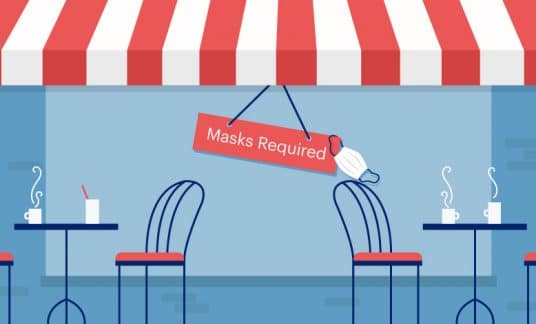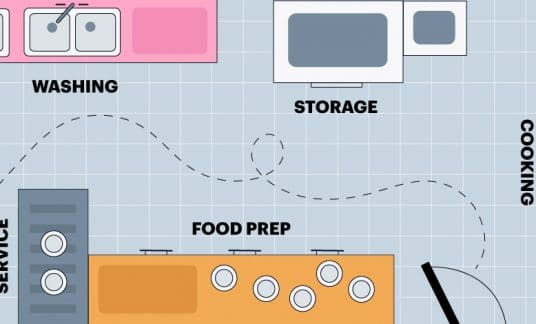Assortment planning involves choosing the right mix of products to buy and display. A solid plan results in happy shoppers and store owners. Without one, you risk cash-flow problems and poor customer experiences.
Learn what retail planning is, its importance and ways to optimize your merchandise assortment strategy.
What Is Assortment Planning?
Assortment planning is the process of forecasting demand then stocking your shelves with goods designed to drive sales.
Typically, retailers assess merchandise regularly, whether quarterly or monthly or any other consistent time frame.
While the method appears simple — add swimsuits in the spring and school supplies in late summer — getting the right quantities and variations is more complex than it sounds.
You need point-of-sale (POS) data to understand historical trends. But you want to know how disruptions such as the COVID-19 pandemic changed buying behaviors.
Moreover, the assortment planning process must consider store layout, visual merchandising and product placement.
Retail Planning: Importance to Small Businesses
According to Statista, imbalances between demand and supply resulted in a $580 million loss for stores in 2020, including out-of-stock and overstock costs.
Every dollar invested in inventory temporarily reduces your cash flow. Buy too many of the wrong items or sizes of clothing and you’re stuck trying to sell it off at bargain prices. Purchase too few or fail to restock popular items and customers are peeved.
In contrast, the right mix reduces markdowns and may increase your average transaction value.
Therefore, your ecommerce assortment strategy affects your finances and customer experiences — both of which impact your store’s overall success.
Challenges of Retail Assortment Planning
Retailers must select the right assortment of goods, place them in the best locations in your store or on your website and adapt to market disruptions.
While inventory management software helps predict demand, other barriers to assortment planning exist, such as:
- Multiple data points: Informed decision-making requires retailers to develop insights from POS, inventory, current trends and consumer behavior data. This isn’t easy to do without assortment planning software.
- Lead time issues: Many purchasing decisions happen far in advance. But supply chain and shipping problems mean even well-made plans fall through.
- Budget and space constraints: Storage, display space and money are finite. Gambling in assortment planning reduces your flexibility to pivot quickly to meet customer demand.

Factors to Consider When Making an Assortment Plan
The main considerations for retail planning include merchandise variety, depth and quantity of stock-keeping units (SKUs).
Variety, also known as breadth or width, refers to different item categories, such as mechanical, standard and watercolor pencils.
Depth adds variation to each category. For each pencil type, your store may sell single and multiple packs, various colors and brands.
Lastly, SKU quantity is the total number of individual items in stock.
However, depending on your store, you may consider several other factors, such as:
- Shelf life
- Lead time
- Promotions
- Item dimensions
- Customer demographics
- Delivery cycles
- Display and store layout
Product Assortment: Merchandise Planning Tips and Strategies
Use these 7 tips to devise an assortment planning system that’s repeatable and supports an omnichannel retail strategy. Doing so could reduce markdowns and maximize profit.
1. Select Assortment Planning Software
In most cases, paid or free POS systems with inventory management features are essential. Without these tools, you’re reliant on spreadsheets.
To benefit from your software, your POS system should:
- Provide buyer data: Understand shoppers and their purchases with systems that integrate or include customer relationship management (CRM) tools.
- Track stock levels: Access historical data, such as pricing information, with built-in inventory controls or integrations with third-party platforms.
- Offer automation features: Automatic inventory reordering and report generation save time while keeping you updated.
- Support data analytics: Reporting features should provide historical and real-time data allowing you to identify top-performing products and predict sales.
There also are a number of assortment planning platforms, such as DotActiv and Oracle. But the price may be a barrier. Instead, consider using a free assortment planning template for Airtable.
2. Tune Into Retail Market Trends
Your sales history may not carry as much weight during times of market disruption. For instance, in 2020, retailers displayed Halloween candy 2-4 weeks earlier than previous years, according to CNN.
Meanwhile, in 2021, they started selling school products sooner. This is due, in part, to the National Retail Federation (NRF) reporting 26% of back-to-school shoppers began in early June, compared with 21% in 2020 and 17% in 2019.
Discover retail trends by:
- Paying attention to Google’s rising retail categories
- Looking at your website’s analytics for keywords, searches and page views
- Exploring item popularity on ecommerce platforms, such as Etsy, Amazon.com and Shopify
- Reviewing Google and Facebook ad data to see top-performing promotions
- Using a news aggregator service, such as Feedly, to get the latest research
- Monitoring recent retail and ecommerce statistics
- Following the NRF and the NPD Group for insights
- Collecting data from existing customers through interactive polls and quizzes
3. Visualize Your Assortment of Goods
Planograms help you visualize product placement and give details about the size and dimensions for product categories.
When used in conjunction with other visual merchandising techniques, a planogram improves the assortment planning decision-making process.
If you haven’t made one before, learn how to make a planogram and explore software options, such as SmartDraw and Shelf Logic.

4. Develop Insights for Assortment Planning
Coming up with insights improves future product selection. Consequently, turning your data into insights is essential regardless of the technology or techniques used.
For instance, if you’re looking at last year’s top-performing products during the holidays, consider:
- Do these items share characteristics, such as price point or brand?
- Are the products located in a certain part of your store or website?
- What type of promotions did you use for top-selling items?
- Do buyers share any characteristics, such as location or other demographics?
- When did these items sell and see the most movement?
- Were the products above or below the average selling price?
Once you have answers, take a look at regional or national trends and niche-related channels to measure potential effects on your store.
5. Track the Customer Journey for Personalized Insights
All of the above data, along with CRM information, should give you a good idea of a shopper’s path to conversion.
You may notice that colored pencils flew off the shelves during the back-to-school season. Yet, when relegated to their old display near mechanical pencils, sales dropped off at similar rates as other pencils.
However, you saw an increase in sales of drawing paper, oil pastels and paints.
You could make assumptions that art shoppers are skipping the wall of pens and pencils and heading right to the art supplies. Shifting the position of the colored pencils could improve sales.
On the other hand, you may notice upticks in open rates for art-related emails or increased traffic to your blog about art techniques.
This could suggest that people find your store not by shopping for colored pencils but by the top of the funnel (TOFU) content.
In this case, inserting links to various art products or adding a banner or video mid-paragraph could influence your visitors’ buying journey.
6. Consider Your In-Store Product Placement
Creative retail display ideas built into a planogram and visual merchandising plan can improve sales and profitability.
But running out of your featured product during a sale won’t.
Take a look at how cross-merchandising, point-of-purchase displays and high-traffic locations affect sales volume and adjust your assortment of goods accordingly.
7. Balance the Big 3: The Right Merchandise, Price and Time
Overstock sales are a great occasional promotion. But you’re often better off simply having cash in your pocket because you bought just the right amount and kind of merchandise.
However, pricing matters, too. In some retail categories, such as art paint brushes, adding variety in price points makes sense.
Yet, you may get by with selling one brand and size of loose, wide-ruled paper.
Finally, timely product placement and promotion affect assortment planning and effectiveness.
Retailers may have pulled out their back-to-school displays earlier this year, based on data from Deloitte’s 2021 Back-to-School Survey. It notes, “59% of back-to-school (BTS) spending will transpire by the end of July versus 45% in 2020.”
Others plan events around Amazon Prime Days, which were held in June 2021, October 2020 and July 2019.
Striking the right balance of products and price points while nailing the timing is part of assortment planning.
Enhance Your Inventory and Sales Performance
Whether you create a product assortment planning model or use software-generated mock-ups, a data-based strategy gives you the competitive edge.
Develop a method that works for your brick-and-mortar or ecommerce store, then use it to improve your decision-making.










